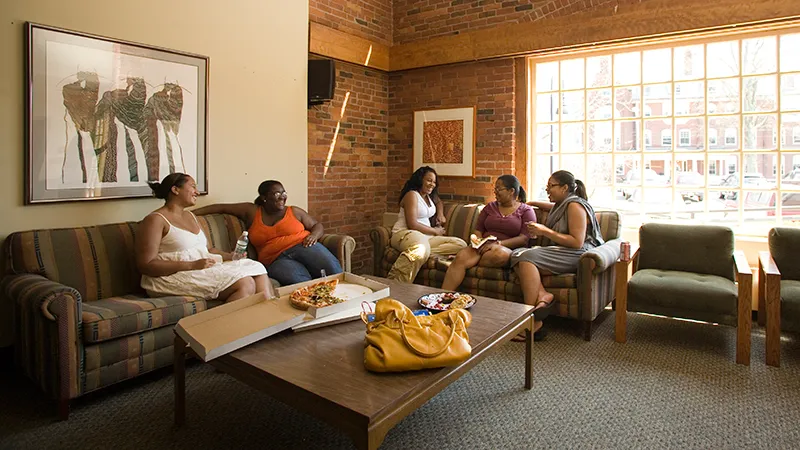Cultural Spaces

Mwangi Cultural Center
The Mwangi Cultural Center opened as the Afro-American Cultural Center on the lower level of Lilly Hall in 1968 and was used by a wide range of student cultural organizations. In 1973, the center was renamed to honor Dr. Ng’endo Mwangi, a member of the Class of 1961 and the first female physician in Kenya, whose dedication and service to her community were well known. The impact of her influence was made especially clear by the Smith students who, at the time of Dr. Mwangi’s death in 1989, wrote: “We, the Smith students of today, owe Mwangi a great debt for being one of the vanguard of women who broke down racial and gender barriers, thereby making our progress a little easier.”
The Mwangi Cultural Center serves as an important cornerstone on campus, providing a physical space for cultural organizations and students of color to engage in holistic programming, host intellectually enriching discussions and effectively build community.
The Mwangi Cultural Center is home to the administrative offices of the Office of Multicultural Affairs and the Mellon Mays Undergraduate Fellowship Program (MMUF) and provides meeting and study spaces for students.
Mwangi Cultural Center Fall 2024 Hours
Academic Year Hours: 9 a.m. to 9 p.m.
Quiet study time: Daily 9 a.m. to noon
Unity House
Unity House is the headquarters of the alliance of 11 cultural organizations known as Unity. Unity was formed in 1991 when leaders of several Smith student-run organizations joined to create an umbrella organization. Unity House serves as the home for the Asian Students’ Association, the Black Students’ Alliance, the Chinese Interregional Student Cultural Organization, EKTA (students of South Asian heritage), Indigenous Smith Students and Allies, the International Students’ Organization, the Korean Students Association, the Latin American Students’ Organization, Multiethnic Interracial Smith (MISC), the Smith African and Caribbean Students’ Association and the Vietnamese Students’ Association.
What is now Unity House was built in 1880 for the Burnham School, providing a laboratory and lecture rooms. It was used for these purposes until 1968 when the college acquired the Burnham School property and renovated the building for use as a space for students living off campus to meet and study. Students who commuted to college were originally known as the Luba Club, with Luba standing for “Let Us Be Acquainted.” The club was founded in 1920 to give those students a sense of community when on campus and had many different homes over the years, ranging from a room in the Students’ Building to space in the basement of Albright. Its name was changed in 1946 to Hampshire House, a name that indicated its members’ ties to Hampshire County while offering some elements of the house system for these local students.
When the college renovated the building in 1969, students had some say in its requirements, and it was outfitted with a kitchen, a large living room, a study room, and two bathrooms. As Hampshire House, the building offered students who lived at home an important means of connecting with the social life on campus. In 1990, the club moved to the office space in the old college bookstore on Green Street, and its former residence was renamed Carriage House. When organizations such as the Asian Students Association, the Black Students Alliance, and the International Students Organization united to request a multicultural center where their members could relax and socialize, the Carriage House was designated as a shared space. The student leaders later changed the building’s name to Unity House, “as a symbol of their togetherness and cooperation.”